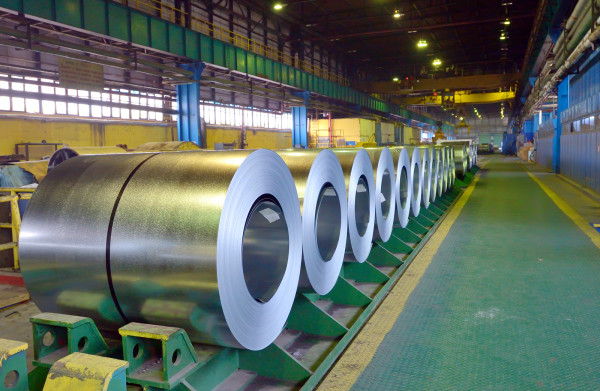
Artists have to get their inspiration from somewhere, even when they work with metal roofing. For the world-famous architect, Frank Gehry, that original inspiration came from the Inland Steel Building in Chicago. It’s a big commercial high-rise building, built in the 50’s, and when Frank looked at it from just the right angle, he saw a fair amount of oil canning in the steel building.
Oil canning is what we call the waviness you see in sheet materials when they deform for various reasons. If you aren’t familiar with the term, it’s because most roofers avoid talking about it.
Often times, oil canning is seen as a cosmetic flaw, but Frank Gehry saw it as added character to each architectural building.
Maybe that’s why Frank has designed some of the most incredible metal buildings in the world, deliberately using the technique in his design.
Where the Building Meets the Eye

Image from https://travelforaircraft.files.wordpress.com/2011/06/blog-b-52_mg_8777.jpg
Oil canning will appear on anything produced from sheet metal, such as the B-52 aircraft pictured above.
The elastic buckling of oil canning can and will occur in any type of metal panel, be it aluminum or steel. Usually, metal roofing and wall panels look flat, but if you catch them in the light, just right, you might see some of that waving and wrinkling.
The canning is usually more pronounced in a bigger and/or flatter panel. The deformation is caused by stress within the metal, causing the panel to buckle ever so slightly, which is why you usually have to catch it in the right light in order to see it.

That’s metal.
During production
First, stresses are introduced during production. All metal roofing panels begin in the form of a coil, essentially as a giant roll of sheet metal. If the coil is longer in the middle or on the edges, or picks up a side edge that isn’t perfectly straight, this can cause stresses in the sheets that will eventually be visible on the roof.
The stresses are more pronounced when you get a wider or thinner sheet. But even our narrower coils usually come from a single wider coil, redistributing these forces among the child coils. When the metal sheets are formed into roofing panels, the work often results in added stresses or tiny bending on the edges of the sheet. As these processes are inherent to the manufacturing of metal roofing, the best that can be done it to minimize it with proper tooling.
Who you are underneath
No matter how perfect your surface layer is, if the support structure or sub-roofing isn’t perfectly flat, these imperfections can be translated onto the surface metal. This also translates to the entire building. Most will understand the idea of a house “settling” after being built, and that means that the tiny shifts in the structure are now stressing the roofing in a new way, causing the metal panels to conform to the new movement.
Installation
As skilled roofers and metal suppliers in Miami, we understand how materials can change during construction; materials expand and/or contract due to heat and load changes.
In fact, we plan on thermal expansion in our designs by flexing the rib and seam areas of the joints; allowing the metal room to expand.
Some oil canning results in lines along the fasteners, and this is due to the over tightening of said fasteners. It’s no different than when your drain plug for the oil pan on your vehicle is over tightened– when it gets hot again the metals expand, slightly, damaging the oil pan.
In the Eye of the Beholder

Image from Tuxyso / Wikimedia Commons CC BY-SA 3.0
The Walt Disney Concert Hall (designed by Frank Gehry) has visible oil canning.
Some degree of oil canning is to be expected, as it is inherent to the production process of sheet metal, and there are certain elements that cause it that are beyond human control, such as thermal expansion, or movement in the primary structure.
If oil canning is a characteristic you don’t find endearing, especially to your roof, hiring a professional who knows how to properly handle the materials and installation, can significantly reduce oil canning effects.
Good engineering and design can mean the proper gauge is selected for your roof, the use of ribs, backer rods, and even the particular finish can all help to mask possible canning of a metal roof.
Oil canning is simply a part of metal roofing, but often times it’s something your builder won’t bring up.
Because we can’t change the physics of metal, be weary of those “professionals” who tell you they can prevent or cure metal canning 100%. They’re simply selling something that doesn’t exist.
Since oil canning is complex physics at work, it means flexible metal roofing panels are absorbing stressful forces that would otherwise give way to the underlying structures.
Besides, as Frank Gehry learned, oil canning can transform a plain, otherwise boring, metal surface into one that is full of beauty and character.
~J.C.






Comments are closed.